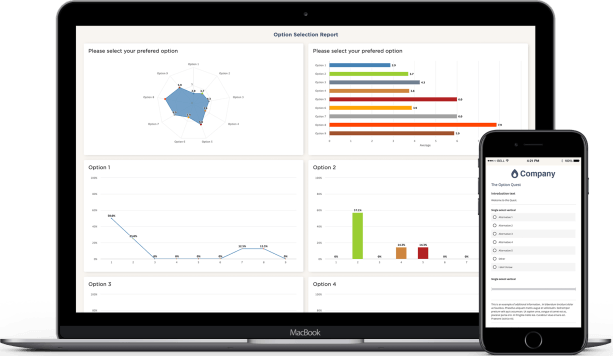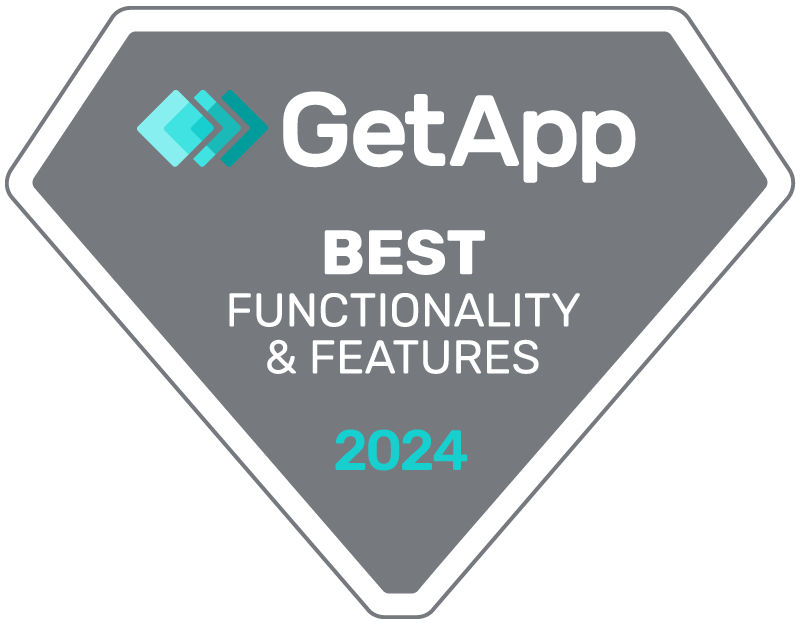Experience Management Platforms


Experience management platforms (XM platforms) have become indispensable assets in the contemporary business environment, reshaping how organizations oversee and elevate customer and employee experiences. This guide will explore what Experience Management Platforms are, how they can be used, why they should be used, and the future within the field.
In an era defined by heightened competition and ever-evolving consumer and employee expectations. The significance of experience management platforms cannot be overstated. They provide businesses with invaluable insights into their customers’ and employees’ perceptions, sentiments, and preferences, empowering them to make informed decisions that resonate with their target audience and workforce.
By enabling real-time feedback collection and analysis, these platforms facilitate the identification of pain points, bottlenecks, and areas for enhancement across the customer journey and employee lifecycle. Armed with actionable intelligence, companies can swiftly implement strategic initiatives. Operational changes to address concerns, streamline processes, and elevate overall satisfaction levels are Also key factors.
Experience management platforms represent a paradigm shift in how businesses approach experience management. By leveraging data-driven insights and cutting-edge technology, organizations can cultivate meaningful and impactful interactions with customers and employees. Thereby driving sustainable growth, fostering brand loyalty, and maintaining a competitive edge.
Table of Contents
Try Questback 14 days for free.
What is an Experience Management Platform?
An experience management platform is a comprehensive software solution designed to gather, analyze, and act on feedback from customers, employees, and other stakeholders. It provides insights into their experiences and enables organizations to make data-driven decisions to improve these experiences.
At its core, experience management function as an all-encompassing toolkit, equipped with several functionalities aimed at capturing feedback across various touchpoints and channels. From customer satisfaction surveys and employee engagement assessments to social media sentiment analysis and real-time chat interactions. The platform adeptly harvests data from every conceivable source, providing organizations with a comprehensive understanding.
Once collected, the feedback undergoes rigorous analysis, employing advanced algorithms and data analytics techniques to unearth patterns, trends, and correlations. Through sentiment analysis, text mining, and predictive modeling, the XM platform distills raw feedback into actionable insights, highlighting areas of strength, weakness, and opportunity within the organization’s operations, products, and services.
Armed with these insights, organizations are empowered to make informed, data-driven decisions and enhancing the experiences of their customers, employees, and stakeholders. Whether it involves optimizing product features, refining service delivery processes, or implementing targeted training programs, the XMP serves as a catalyst for organizational improvement, fostering continuous innovation and adaptation in response to evolving market dynamics and stakeholder expectations.
In today’s fiercely competitive market landscape, characterized by ever-changing consumer behaviors and heightened expectations, the significance of experience management cannot be overstated. In such an environment, where customer loyalty and employee satisfaction serve as the cornerstones of sustained success, organizations must prioritize the delivery of exceptional experiences across all touchpoints.
Leading Experience Management Platforms
Among the top players in this arena are Salesforce, HubSpot, and Adobe Experience Manager. Let’s delve into these platforms and uncover their unique offerings in shaping exceptional experiences for businesses and their customers.
- Salesforce: Salesforce is one of the largest and most well-known customer relationship management (CRM) platforms globally. While primarily recognized for its CRM solutions, Salesforce also offers various experience management tools through its Salesforce Customer 360 platform. This platform enables businesses to manage customer data, personalize customer interactions, and track customer journeys across multiple channels.
- HubSpot: HubSpot is a leading provider of inbound marketing, sales, and customer service software. The HubSpot platform includes tools for managing customer relationships, creating marketing campaigns, and providing customer support. With its focus on inbound marketing, HubSpot emphasizes attracting, engaging, and delighting customers through relevant and helpful content. While not as expansive in the experience management space as Salesforce, HubSpot’s suite of tools plays a vital role in helping businesses enhance their overall customer experience.
- Adobe Experience Manager: Adobe Experience Manager (AEM) is part of Adobe’s Digital Experience Platform, which offers solutions for content management, digital asset management, and digital marketing. AEM is a comprehensive content management system (CMS) that enables organizations to create, manage, and deliver digital experiences across various channels and devices. With features like personalization, analytics, and optimization, AEM helps businesses tailor and optimize customer experiences to drive engagement and conversion.
- Questback: Questback is a prominent player in the Experience Management Platform space, offering comprehensive solutions for gathering, analyzing, and acting on feedback from customers, employees, and other stakeholders. With its suite of feedback solutions, Questback empowers organizations to understand and improve their overall customer and employee experience management. Through features like real-time feedback collection, advanced analytics, notifications and customizable dashboards, Questback enables businesses to make data-driven decisions and drive continuous improvement in customer and employee experiences.

The Importance of Experience Management in Today’s Business Landscape
Experience management platforms are vital tools, enabling businesses not only to understand but also to quickly respond to the changing needs and preferences of both customers and employees. By harnessing the power of real-time data collection and analysis, XM platforms empower organizations to gain unparalleled insights into the intricate nuances of customer interactions and employee sentiments, enabling them to tailor their strategies and initiatives accordingly.
Through the seamless integration of feedback mechanisms and analytics tools, XM platforms provide organizations with the agility to adapt and iterate their approaches in real time. Ensuring that they remain aligned with the ever-shifting expectations of their stakeholders. Whether it’s identifying emerging trends, addressing customer pain points, or enhancing employee engagement. Experience management serve as invaluable assets in driving continuous improvement.
Key Features for Feedback Experience Management Platforms
- Real-Time Feedback Collection: XM platforms enable organizations to collect feedback from customers and employees in real time through various channels, such as surveys, chatbots, and social media.
- Integrations with Other Business Tools: They seamlessly integrate with CRM systems, HR software, and other business tools to provide a holistic view of the customer and employee journey.
- Customizable Surveys and Reporting Dashboards: XM platforms offer customizable surveys and reporting dashboards, allowing organizations to tailor feedback collection and analysis to their specific needs.
Try Questback 14 days for free.
Benefits of Implementing an Experience Management Platform
Enhancing Customer Satisfaction: One of the primary advantages of adopting an XM platform is the ability to enhance customer satisfaction. By actively gathering and analyzing customer feedback, businesses can gain valuable insights into their customers experiences, preferences, and pain points. This enables them to identify areas for improvement in products, services, and overall customer interactions. By addressing these pain points and making necessary enhancements, businesses can significantly improve customer satisfaction levels. Thereby fostering stronger customer loyalty and retention.
Improving Employee Engagement: Another critical benefit of experience management is the ability to empower employees and enhance engagement within the organization. Workhuman underscores the pivotal role of employee engagement initiatives, emphasizing their profound impact on organizational success. In terms of employee well-being, engaged employees not only demonstrate heightened safety awareness, with a 12% improvement in overall safety. Although they also exhibit a remarkable 18% increase in physical and mental health. The positive effects of employee engagement ripple throughout the organization, manifesting in a 41% decrease in absenteeism, a 17% enhancement in customer relations, a 14% uptick in product quality, and a notable 23% boost in profitability. Moreover, organizations with robust engagement strategies experience a significant 25% reduction in employee turnover. This loyalty is further reflected in the finding that 54% of engaged employees would decline alternative job offers. By soliciting feedback from employees and actively addressing their concerns, organizations can create a more inclusive and supportive work environment. This, in turn, leads to higher levels of employee engagement, productivity, and retention rates.
Driving Business Growth Through Actionable Insights: XM platforms provide organizations with actionable insights that can drive business growth and success. By leveraging data-driven insights from customer feedback, organizations can make informed decisions to optimize processes, refine strategies, and differentiate themselves in the market. These insights enable businesses to identify opportunities for innovation, anticipate customer needs, and stay ahead of competitors. Ultimately, by harnessing the power of experience management, organizations can drive sustainable business growth and achieve their strategic objectives.
In summary, implementing an experience management platform offers businesses a strategic advantage by enhancing customer satisfaction, improving employee engagement, and driving business growth through actionable insights.

Three Areas of Application
- Brand Perception Management: Some XM platforms enable businesses to monitor and analyze social media sentiment, online reviews, and other indicators of brand perception. This allows organizations to proactively manage their brand reputation, address negative feedback, and capitalize on positive sentiment.
- Operational Efficiency Enhancement: XM platforms help businesses identify inefficiencies and bottlenecks in internal processes through feedback from employees and stakeholders. By streamlining operations and addressing pain points, organizations can improve efficiency, reduce costs, and drive overall performance.
- Market Research and Competitive Analysis: XM platforms provide valuable insights into market trends, competitor strategies, and customer preferences through feedback collection and analysis. This information helps businesses stay competitive, identify new opportunities, and adapt their strategies to changing market dynamics.
Choosing the right Experience Management Platform for Your Business
When selecting the appropriate experience management platform for your business, there are several key factors to take into account. Additionally, it’s essential to address specific questions before making a decision. Check out our guide on the 10 questions to answer before choosing a feedback solution. Organizations should carefully consider aspects such as scalability, ease of use, customization options, and integration capabilities. These elements play a crucial role in ensuring that the chosen platform aligns with the unique needs and requirements of the business, both in the present and in the foreseeable future.
Additionally, conducting a thorough comparison of the leading experience management platforms can provide valuable insights into their respective strengths and weaknesses. By evaluating factors such as features, pricing structures, and customer reviews, businesses can gain a comprehensive understanding of the available options and make well-informed decisions. This comparative analysis serves as a valuable tool in the decision-making process. Enabling organizations to identify the platform that best suits their specific objectives and constraints.
In essence, selecting the right platform for your experience management entails a thoughtful and systematic evaluation of various considerations. Coupled with a comprehensive comparison of available options. By prioritizing factors such as scalability, ease of use, customization, and integration, businesses can identify a platform that not only meets their immediate needs but also aligns with their long-term strategic objectives.
Continuous Improvement Strategies
Continuous Improvement Strategies entail exploring various methods and approaches for continuously enhancing both customer and employee experiences by leveraging feedback and insights from experience management platforms. By integrating feedback mechanisms and analytical tools from XM platforms, organizations can establish a framework for ongoing improvement and innovation across all aspects of their operations.
One key strategy for continuous improvement is actively collecting and analyzing feedback from both customers and employees. Utilizing diverse channels such as customer surveys, employee evaluations, and social media, organizations, can gain valuable insights into the experiences, needs, and preferences of both customers and employees. Systematically reviewing this feedback enables organizations to identify trends, patterns, and areas for improvement. This provides a foundation for driving strategic initiatives and actions to address core issues and enhance overall satisfaction for customers and employees alike.
Another essential strategy involves continuously evaluating and optimizing existing processes and systems based on insights derived from XM. By analyzing data and identifying inefficiencies and bottlenecks, organizations can implement changes and improvements. Striving for continuous improvement and innovation ensures that organizations remain responsive to changing market conditions and customer demands. While also remaining competitive and relevant in the long term.

Future Trends
One such trend is the increasing integration of Artificial Intelligence (AI) and Machine Learning (ML). AI and ML technologies hold immense potential for revolutionizing the way organizations understand and optimize customer and employee experiences. By leveraging advanced algorithms and data analysis techniques, XM platforms empowered with AI and ML can anticipate customer and employee behavior with unprecedented accuracy. Theese factors enable organizations to address their needs and preferences. Moreover, these technologies enable the delivery of personalized experiences at scale, catering to the individual preferences of customers and employees alike.
Another key trend on the horizon is the continued prominence of Big Data in experience management. As organizations grapple with ever-increasing volumes of data from diverse sources. The role of Big Data analytics in driving insights and decision-making within XMPs becomes increasingly critical. By harnessing the vast troves of data generated by customer interactions, employee feedback, and operational processes, XM platforms can provide organizations with deeper and more nuanced insights into the intricacies of customer and employee experiences. These insights, in turn, inform strategic decision-making. Enabling organizations to optimize their offerings, refine their processes, and drive continuous improvement across all facets of the business.
In essence, the future of experience management technology holds tremendous promise. Driven by the convergence of AI, ML, and Big Data analytics. By embracing these technologies and leveraging them within XMPs, organizations can unlock new opportunities. Enhancing customer and employee experiences, driving innovation, and maintaining a competitive edge in an increasingly dynamic and customer-centric marketplace.
Conclusion: Experience Management platforms
In conclusion, experience management platforms stand as pillars of innovation and progress in today’s business landscape. By embracing these platforms, organizations can gain deeper insights into the needs and preferences of their customers and employees. They can also drive meaningful improvements that foster long-term success. As we continue to navigate the ever-changing dynamics of the market, the adoption of XMPs will remain integral to achieving sustainable growth.
FAQ
An Experience Management Platform is a software solution that gathers, analyzes, and acts on feedback from customers, employees, and stakeholders. It provides insights into their experiences, enabling data-driven decisions to enhance satisfaction and drive organizational improvement
To choose the right experience management platform for your business, consider factors like scalability, ease of use, customization options, and integration capabilities. Conduct thorough comparisons of leading platforms, evaluating features, pricing, and customer reviews. Prioritize scalability and alignment with long-term strategic objectives for optimal decision-making.
Experience Management in today’s business landscape is crucial due to the evolving needs and preferences of customers and employees. Experience Management Platforms (XMPs) enable organizations to comprehend and respond swiftly to these changes by harnessing real-time data collection and analysis. This empowers businesses with unparalleled insights into customer interactions and employee sentiments, allowing them to tailor strategies accordingly. By seamlessly integrating feedback mechanisms and analytics tools, XMPs enable organizations to adapt and iterate their approaches in real time, ensuring alignment with stakeholders' expectations and driving continuous improvement and innovation across the organization.
Continuous Improvement Strategies refer to the ongoing exploration of methods and approaches aimed at enhancing both customer and employee experiences. This involves leveraging feedback and insights from experience management platforms (XMPs) to establish a framework for continuous improvement and innovation across all operational aspects. Key strategies include actively collecting and analyzing feedback from customers and employees, as well as continuously evaluating and optimizing existing processes and systems based on insights derived from XMPs. This iterative approach ensures organizations remain responsive to market dynamics and competitive while striving to enhance overall satisfaction for both customers and employees.
Experience management (XM) involves the systematic approach of overseeing and enhancing the experiences of customers, employees, and other stakeholders within an organization. It encompasses the collection, analysis, and action on feedback gathered from various touchpoints and channels, aiming to improve satisfaction, loyalty, and overall engagement. XM platforms play a crucial role in facilitating this process by providing comprehensive software solutions tailored to gather, analyze, and act on feedback effectively.

Try Questback
Questback is a leading Customer and Employee Experience solution that makes it easy to collect, analyse and take action on key stakeholder insights.









